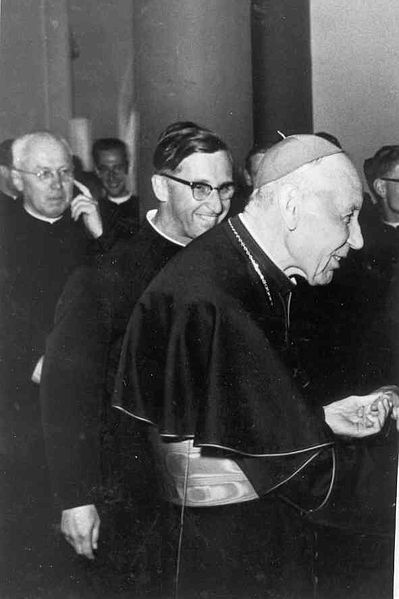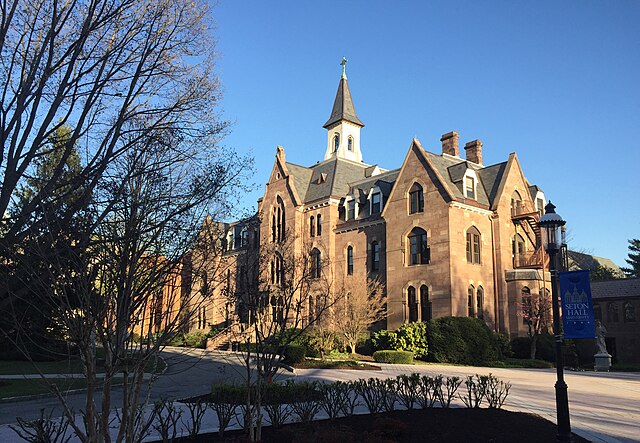Nostra aetate, or the Declaration on the Relation of the Church with Non-Christian Religions, is an official declaration of the Vatican II, an ecumenical council of the Catholic Church. It was promulgated on 28 October 1965 by Pope Paul VI. Its name comes from its incipit, the first few words of its opening sentence, as is tradition. It passed the Council by a vote of 2,221 to 88 of the assembled bishops.
Synagoga and Ecclesia in Our Time (2015), sculpture by Joshua Koffman at the Jesuit-run Saint Joseph's University, Philadelphia, commemorating Nostra aetate.
John XXIII met with Jules Isaac in 1960, the author of Jésus et Israël. After the meeting he directed the SECU to prepare a document on Catholic-Jewish relations for the Second Vatican Council.
Cardinal Augustin Bea oversaw the drafting of Nostra aetate by his periti as the President of the Secretariat for Promoting Christian Unity.
Seton Hall University, New Jersey in the United States, where Decretum de Iudaeis was drafted in 1961. Jewish convert and Vatican II periti, John M. Oesterreicher, founded the Institute of Judaeo-Christian Studies here in 1953.
The Second Ecumenical Council of the Vatican, commonly known as the Second Vatican Council or Vatican II, was the 21st and most recent ecumenical council of the Catholic Church. The council met in Saint Peter's Basilica in Vatican City for four periods, each lasting between 8 and 12 weeks, in the autumn of each of the four years 1962 to 1965. Preparation for the council took three years, from the summer of 1959 to the autumn of 1962. The council was opened on 11 October 1962 by John XXIII, and was closed on 8 December 1965 by Paul VI.
Saint Peter's Basilica (Venue of the Second Vatican Council)
Before a papal Mass at the council; area between papal altar and apse/cathedra altar, in front of it the seat of the pope.
A Catholic priest celebrating Tridentine Mass, the form of the Mass prevalent before the council, showing the chalice after the consecration.
A contemporary Mass in modern practice, as versus populum became the common posture and gesture practised after the council. The priest faces the congregation, while vestments and artwork are less ornate.








